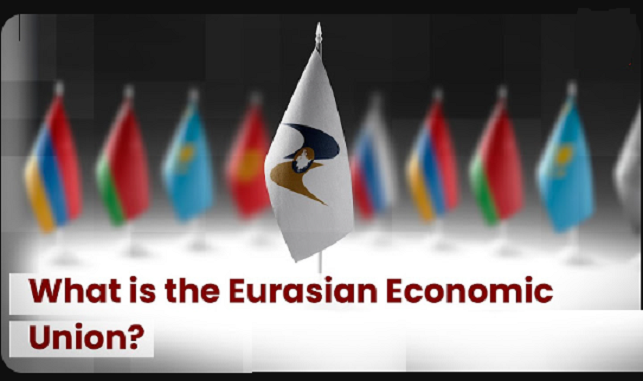
At the heart of the connection between the BRI and EAEU is the mutual coordination of China’s and Russia’s economic interests in Eurasia.
The Eurasian Economic Union (EAEU) groups Armenia, Belarus, Kazakhstan, Kyrgyzstan and Russia. Starting from January 1, 2024, Armenia will take over from Russia the rotating EAEU chairmanship with a one-year tenure.
During a meeting of the Supreme Eurasian Economic Council on 1 January 2024, heads of EAEU member states summarized the union’s achievements over the past few years, discussed prospects for future cooperation and approved a declaration on the further development of economic processes within the framework of the union until 2030 and for the period until 2045.
The linked video (from The Duran, Jan 3, 2024) discusses how and why Eurasian Economic Union is moving closer to BRICS.
As an opinion piece in CGTN discusses, there are many regional integration and cooperation mechanisms and initiatives in Eurasia, of which the most influential is undoubtedly the Belt and Road Initiative (BRI) proposed by China. Nearly 160 countries and international organizations have signed partnership agreements with China. As far as post-Soviet space is concerned, the highest level of integration is represented by the Russian-led Eurasian Economic Union (EAEU).
On May 8, 2015, China and Russia signed the Joint Statement on Cooperation on the Construction of Joint Eurasian Economic Union and the Silk Road Projects. China supports the Russia-led Eurasian Economic Union while Russia formally and explicitly supports China’s Silk Road Economic Belt Initiative.
On May 17, 2018, the Agreement on Trade and Economic Cooperation between the EAEU and China was signed, covering 13 chapters, including customs cooperation and trade facilitation, intellectual property rights, departmental cooperation, e-commerce and government procurement. In December 2018, the economic and trade cooperation agreement entered into force.
At the heart of the connection between the BRI and EAEU is the mutual coordination of China’s and Russia’s economic interests in Eurasia and the search for the greatest common denominator for the interests of all parties after taking into account the demands of member states. The connection will bring tangible benefits to the BRI and EAEU countries.
For China, the political significance is that it dispels the worries of the entire Eurasian region so that countries don’t have to worry about the need to “choose between China and Russia.” The economic significance is that it provides institutional arrangements for customs facilitation and e-commerce, which is conducive to the exchange of goods and personnel.
For EAEU member states, the connection can better attract Chinese investment and accelerate the implementation of joint projects. More importantly, it can help EAEU countries access China’s huge market, especially in agricultural produce.
On 1 Jan 2024 the EAEU and Iran, one of the new BRICS members, signed a full-fledged free trade agreement, replacing the temporary agreement in effect since 2019. The two sides also agreed to expand cooperation in mining, education, medicine and other fields.
VIDEO: https://youtu.be/Ed2kZvsX8fY
Read more: